
In July 2022, the team assembled in England for our annual meeting for the Roman Melting Pots project. The main goals of this trip were for the team to finally meet in person (five out of six members were onboard at last!), and to discuss the project’s main research areas: ceramic analysis, organic residue analysis, and analytical chemistry. Rachel, Anastasia, and Simon travelled from Germany to Bristol, which would serve as home base for the week. We all travelled to the University of Exeter first to hear about Martin’s work on pottery in the NW Roman provinces. We learned about Martin’s approaches to ceramic analysis, how he collects and analyzes his data, and a synopsis of ceramics from each of our three case study sites: Colchester, Vindolanda, and York.
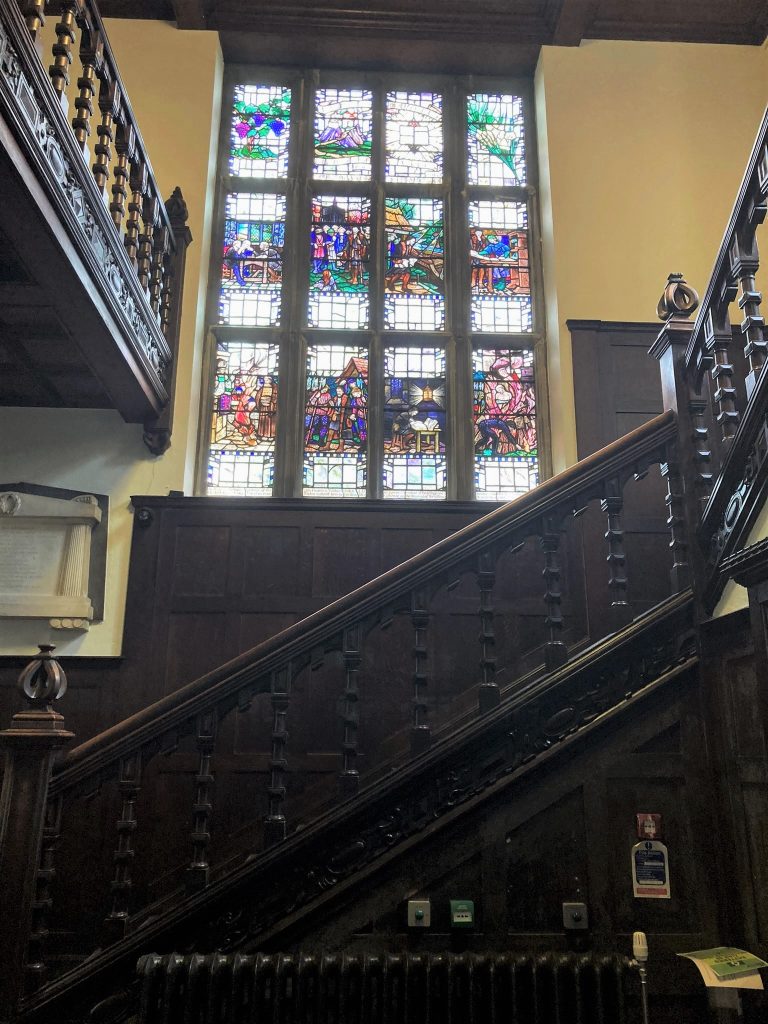
The second day, Lucy hosted the team back at the University of Bristol in the Department Anthropology and Archaeology, which is housed in a beautiful early 20th century Arts and Crafts building. She showed us the archaeology and chemistry labs where artifacts are processed and samples taken and the in-house gas chromatography-mass spectrometry (GC-MS) instrument. Lucy gave a summary of how organic residue analysis is used in archaeology, outlining recent trends in residue research, and stable carbon isotope analysis, which we will use to differentiate meat from animals and marine sources and milk from various animal species. Simon then went through the analytical techniques we plan to use with the team— gas and liquid chromatography coupled with high-resolution mass spectrometry, flame ionization detection, and isotope ratio mass spectrometry —and how we glean information from the vast data sets these will produce.
Walking through the three project research areas helped us better envision how the lines of evidence will converge as we investigate culinary practices in Roman Britain. We had a productive brainstorming session where we identified issues we may encounter and discussed other directions we could take the data down the road. We charted out a plan for the next six-nine months, which includes several more sampling trips to Colchester and Vindolanda, the onboarding of our final team member, Rob, and the extraction of our first sets of residues.
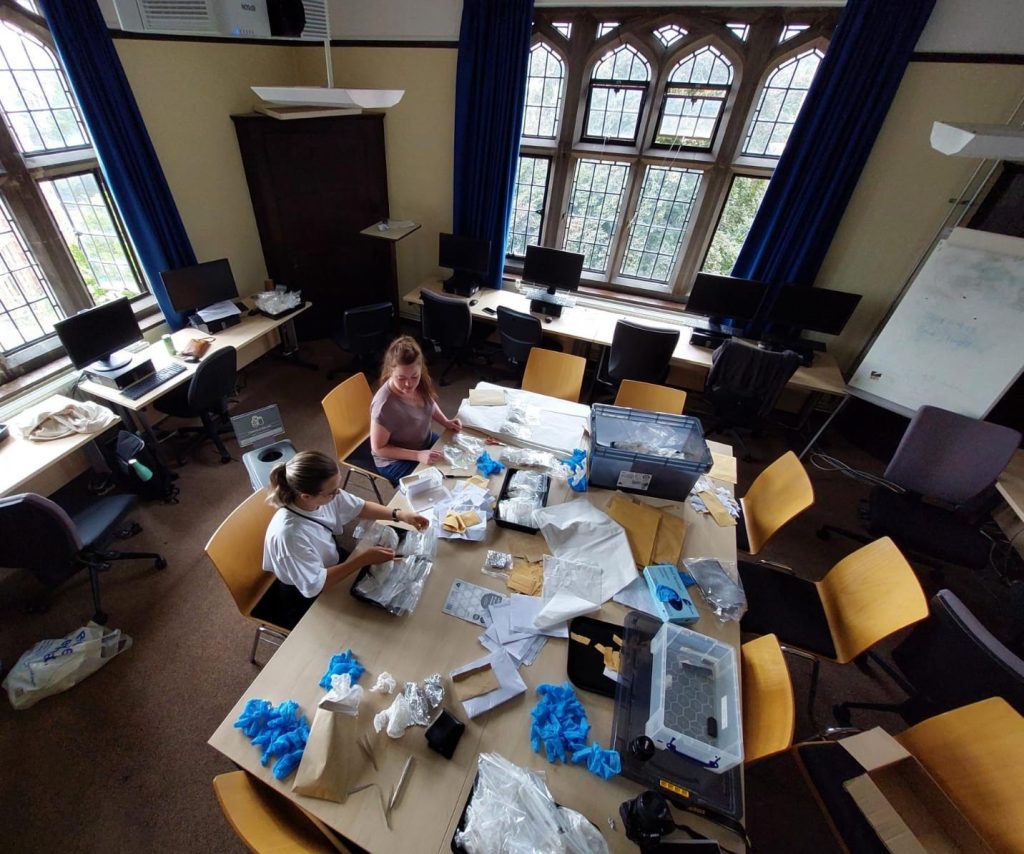
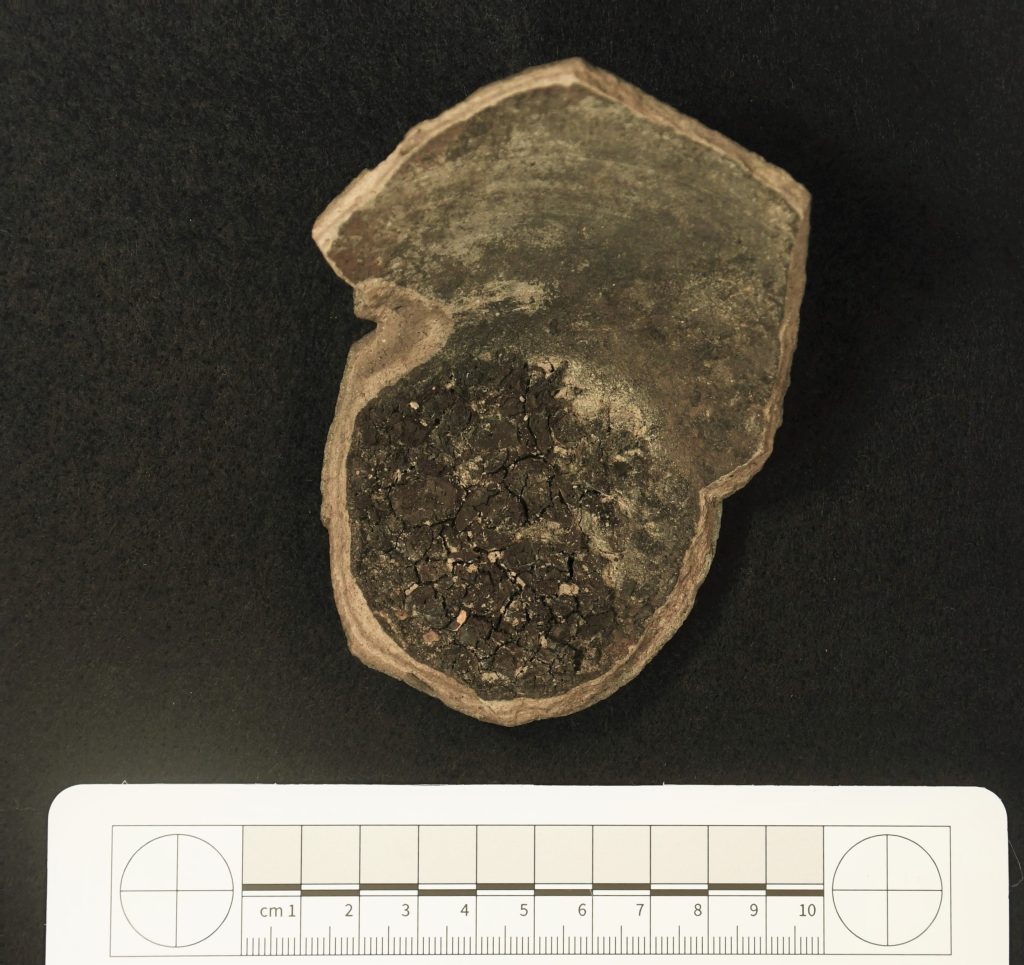
We also got the chance to look at our initial pottery subset from Vindolanda as a team for the first time. We discovered that the aluminum foil wrapping of the sherds was degrading, despite being wrapped only months prior. We started a two-day rehousing project where we re-wrapped all 150 sherds in acid-free paper and paper envelopes. This gave us a chance to photograph some interesting vessels, such as this grey ware jar. This jar remnant had some burnt residues on the bottom, probably from a previous meal scorched on the surface. This rare visible surface residue will be collected (in addition to the underlying ceramic matrix itself) and analyzed to see what lipids remain. The final day, we were given a tour of the Organic Geochemistry Unit (OGU) and its many instruments. In other words, we got to see some of the fancy toys we would be using in the project. The instruments certainly did not disappoint, including the powerful GC 7890/7200B quadrupole time-of-flight mass spectrometry system (GC-QToF MS). We even spotted a few reference pots from the early landmark research in the history of organic residues analysis.
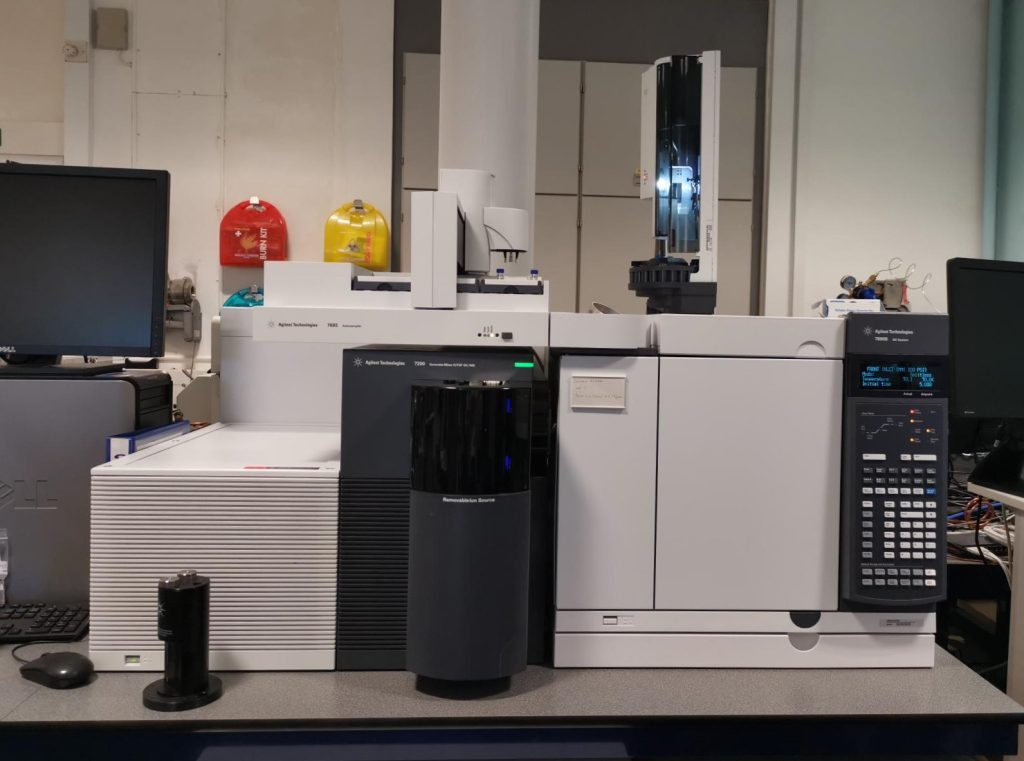
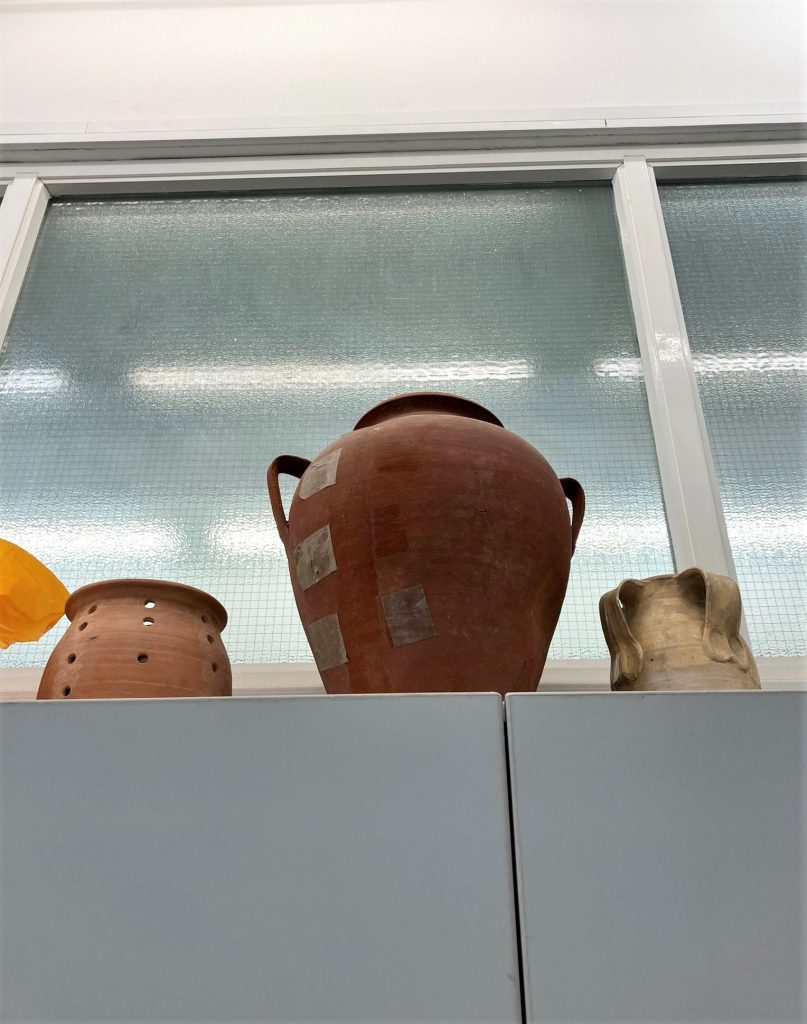
All in all, we had a very successful first meeting. Rachel and Anastasia even managed to try a modern culinary tradition for the first time—a full English breakfast (for comparative research, of course). Stay tuned for our next entry, in which we discuss our first sampling trip to Colchester.
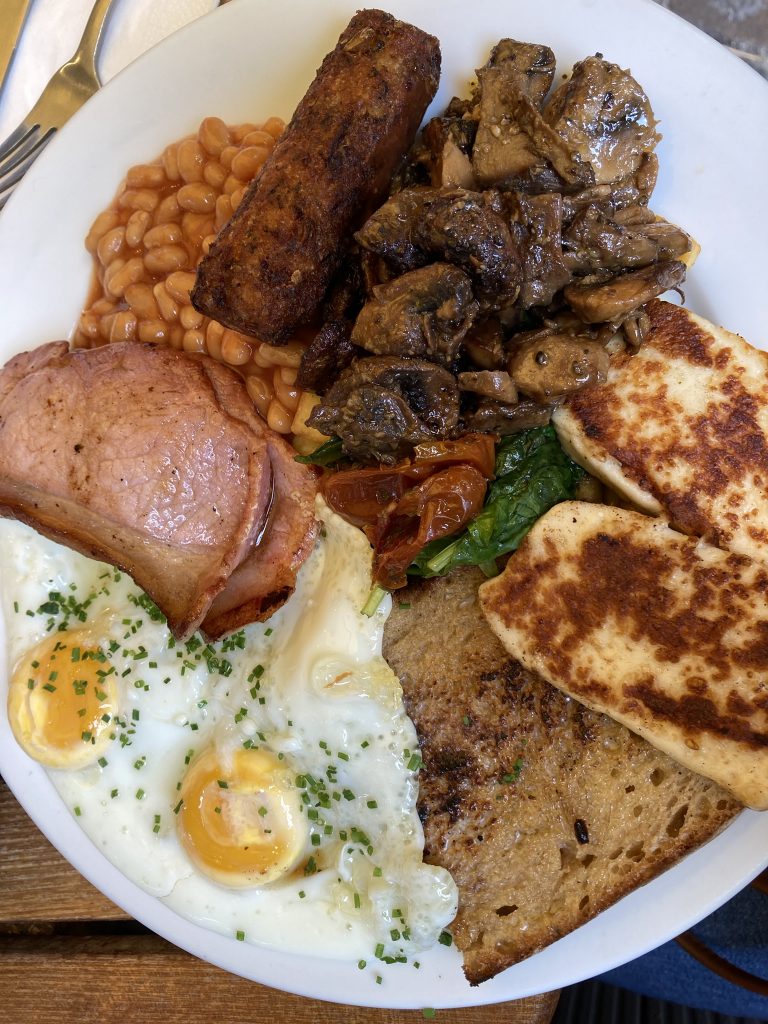
Blog post by Rachel Vykukal.